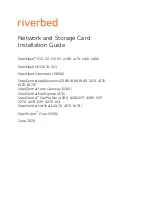
Timers
12-3
Peripherals
12.1.1 Timer Pins
Each timer has one pin associated with the timer clock signal (TCLK) pin. This
pin (TCK) is used as a general-purpose I/0 signal, as a timer output, or as an
input for an external clock for a timer. Each timer has a TCLK pin: TCLK0 is
connected to timer0, TCLK1 to timer1.
12.1.2 Timer Control Registers
Three memory-mapped registers are used by each timer:
-
Global-control register
The global-control register determines the operating mode of the timer,
monitors the timer status, and controls the function of the I/O pin of the timer.
-
Period register
The period register specifies the timer’s signaling frequency.
-
Counter register
The counter register contains the current value of the incrementing counter.
You can increment the timer on the rising edge or the falling edge of the
input clock. The counter is zeroed and can cause an internal interrupt
whenever its value equals that in the period register. The pulse generator
generates either of two types of external clock signals: pulse or clock. The
memory map for the timer modules is shown in Figure 12–2.
















































